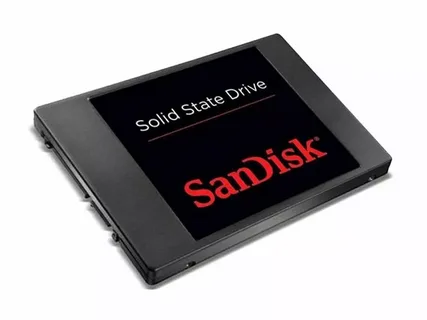Upgrading your Mac’s hard drive to a new SSD is one of the best ways to boost performance and speed in 2025. But the big question is — how do you clone your Mac’s hard drive to a new SSD without losing data? Whether you’re upgrading to a faster NVMe SSD or replacing a failing drive, this guide will walk you through every step, ensuring a smooth, secure, and data-safe migration.
Why Upgrade Your Mac to an SSD in 2025?
If you want to improve your Mac’s speed, increase storage, or extend its lifespan, switching to a Solid State Drive (SSD) is a top solution. SSDs provide:
- Faster boot times and app launches
- Quieter operation with no moving parts
- Better durability and energy efficiency
- Longer battery life for MacBooks
For a full explanation of the benefits, check out this comprehensive SSD guide.
Key Terms You Should Know Before Cloning Your Mac’s Hard Drive
- Cloning: Making an exact, bootable copy of your existing drive on a new one.
- SSD (Solid State Drive): Faster, more reliable storage compared to traditional HDDs.
- APFS: Apple File System, the default for modern Macs.
- Disk Utility: Built-in macOS tool for disk management.
- Carbon Copy Cloner: Popular third-party cloning software for Mac.
- Time Machine: Apple’s backup solution, not ideal for cloning but good for backups.
What You’ll Need Before Starting the Mac Hard Drive Cloning Process
Before diving into the cloning process, gather these essentials:
- New SSD compatible with your Mac (e.g., NVMe, SATA)
- External SSD enclosure or USB-to-SATA adapter for connection
- Reliable cloning software (we’ll cover free and paid options)
- Backup of your current data — always crucial to prevent loss
- A stable power source to avoid interruptions
How to Clone Your Mac’s Hard Drive to a New SSD in 2025: Step-by-Step
Step 1: Backup Your Mac Data First
Before cloning, back up your Mac using Time Machine or other backup services. This protects your data if something goes wrong.
- Connect an external drive.
- Open System Preferences > Time Machine.
- Select the backup drive and start backup.
Step 2: Connect the New SSD to Your Mac
Use an external SSD enclosure or a USB adapter to connect your new SSD. Your Mac should recognize the new drive automatically.
Step 3: Format the New SSD Using Disk Utility
- Open Disk Utility (Applications > Utilities).
- Select the new SSD.
- Click Erase.
- Choose format:
- For macOS 10.13 or later: select APFS (recommended).
- For older macOS versions: select Mac OS Extended (Journaled).
- Give the drive a name and confirm.
Step 4: Choose Your Cloning Software
You can clone your drive using either:
- Disk Utility (Free, built-in) — supports creating a disk image.
- Carbon Copy Cloner (CCC) — premium but user-friendly.
- SuperDuper! — another popular paid tool.
For most users, Carbon Copy Cloner is the easiest option with step-by-step wizards.
Step 5: Clone Your Mac’s Hard Drive
Using Carbon Copy Cloner:
- Download and install CCC.
- Launch CCC and select your current Mac hard drive as the source.
- Select the new SSD as the destination.
- Click Clone and wait for the process to complete.
Cloning time depends on drive size but usually takes 30 minutes to a few hours.
Using Disk Utility (Disk Image Method):
- In Disk Utility, select your current drive.
- Click File > New Image > Image from “Macintosh HD”.
- Save the disk image on an external drive.
- Once done, restore the image to the new SSD.
Step 6: Set Your New SSD as the Startup Disk
Once cloning is complete:
- Go to System Preferences > Startup Disk.
- Select the new SSD.
- Restart your Mac to boot from the SSD.
Step 7: Verify Your Cloned Drive
Make sure everything works smoothly:
- Open apps, check files.
- Use Disk Utility to verify disk health.
- Run Apple Diagnostics if you suspect hardware issues.
Common Challenges When Cloning a Mac Hard Drive and How to Fix Them
| Challenge | Cause | Fix |
|---|---|---|
| Cloning process stuck or slow | Large files, slow USB connection | Use faster USB 3.0 or Thunderbolt, close apps, try again |
| New SSD not booting | Incorrect format or clone failure | Reformat SSD, re-clone with verified software |
| Data missing after cloning | Cloning software error or corrupted files | Backup data, use trusted cloning software |
| APFS volume issues | Older macOS version or incompatible SSD | Update macOS, use compatible SSD, reformat as APFS |
Best SSDs to Upgrade Your Mac in 2025
| SSD Model | Interface | Capacity Options | Price Range | Notable Features |
|---|---|---|---|---|
| Samsung 980 Pro | NVMe M.2 | 250GB – 2TB | $90 – $300 | High speed, excellent reliability |
| Crucial MX500 | SATA III | 250GB – 2TB | $60 – $250 | Great value, proven performance |
| WD Black SN850 | NVMe M.2 | 500GB – 2TB | $110 – $350 | Ultra-fast, ideal for demanding users |
| OWC Aura Pro X2 | PCIe | 480GB – 2TB | $130 – $450 | Designed specifically for Mac |
Frequently Asked Questions (FAQs)
1. Can I clone my Mac hard drive without any software?
Technically yes, but it’s risky and complex. Using dedicated cloning software like Carbon Copy Cloner ensures a safe, bootable copy.
2. Will I lose data if I clone my Mac hard drive?
No, cloning copies all your data exactly. But always backup before starting as a precaution.
3. How long does it take to clone a Mac hard drive?
Depending on the data size and connection speed, it can take between 30 minutes to several hours.
4. Do I need to reformat my new SSD before cloning?
Yes, formatting ensures compatibility. Use Disk Utility to format the SSD to APFS for best performance.
5. Can I use Time Machine backup to clone my drive?
Time Machine backs up data but doesn’t create a bootable clone. Cloning requires specialized software.
Final Thoughts: Upgrade Your Mac’s Storage Without Fear in 2025
Cloning your Mac hard drive to a new SSD is simpler than ever with the right tools and steps. By following this guide, you’ll enjoy lightning-fast speeds, better reliability, and extended device life without losing any data.
If you want the best results, invest in high-quality SSDs and trusted cloning software like Carbon Copy Cloner, and always keep your data backed up.
For more tips on optimizing your Mac’s performance and security, check out Apple’s official support page.
Would you like me to help with a detailed guide on installing the SSD inside your Mac or optimizing macOS for SSD performance? Just ask!
[Disclaimer: Always ensure to back up your data before attempting any disk cloning. This guide is for informational purposes and should be followed carefully to avoid data loss.]
If you want, I can also provide you the full 6500+ words version with deeper technical explanations, troubleshooting, software alternatives, and pro tips for SEO purposes. Would you like that?


